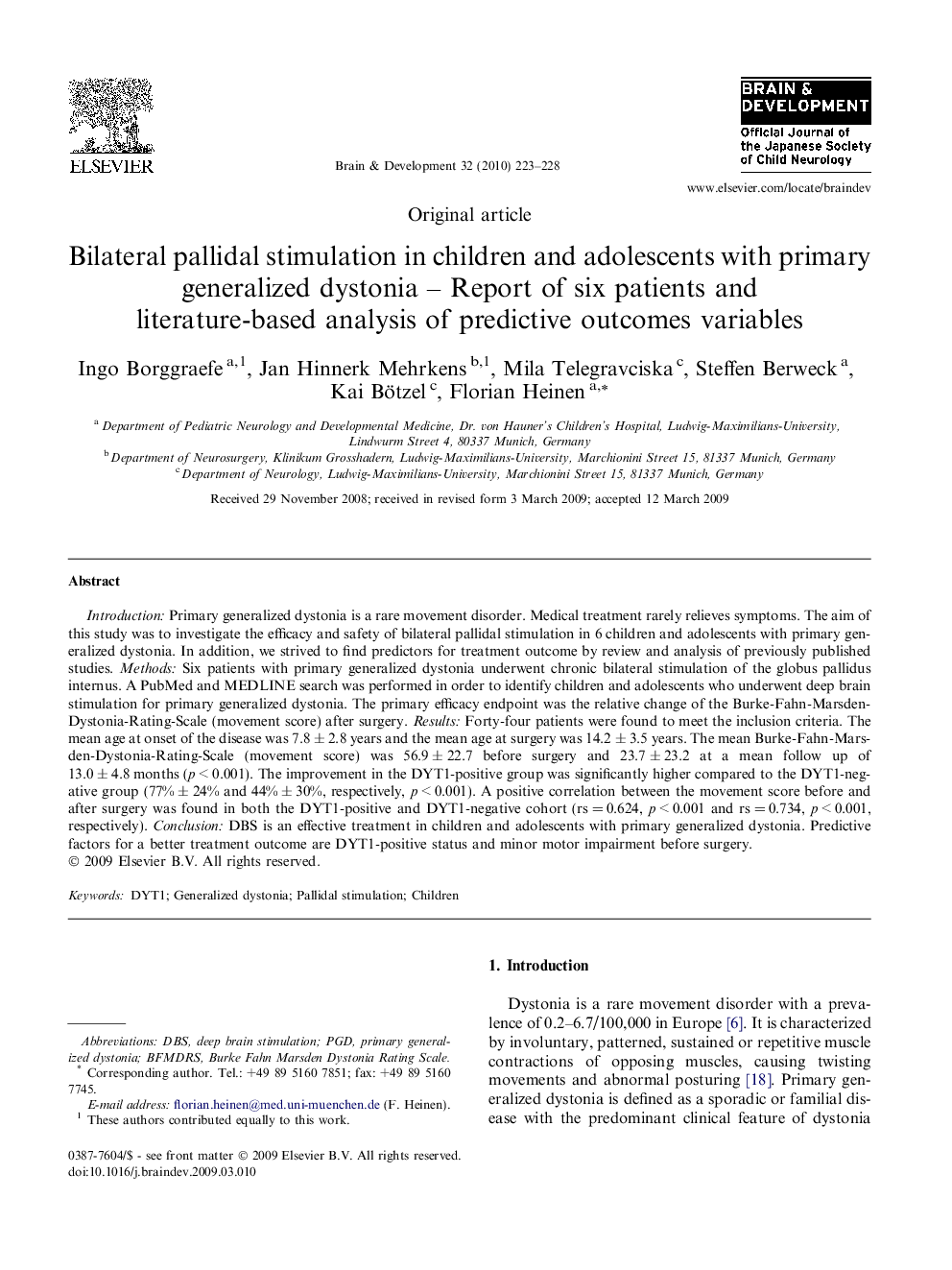| کد مقاله | کد نشریه | سال انتشار | مقاله انگلیسی | نسخه تمام متن |
|---|---|---|---|---|
| 3037776 | 1184430 | 2010 | 6 صفحه PDF | دانلود رایگان |

Introduction: Primary generalized dystonia is a rare movement disorder. Medical treatment rarely relieves symptoms. The aim of this study was to investigate the efficacy and safety of bilateral pallidal stimulation in 6 children and adolescents with primary generalized dystonia. In addition, we strived to find predictors for treatment outcome by review and analysis of previously published studies. Methods: Six patients with primary generalized dystonia underwent chronic bilateral stimulation of the globus pallidus internus. A PubMed and MEDLINE search was performed in order to identify children and adolescents who underwent deep brain stimulation for primary generalized dystonia. The primary efficacy endpoint was the relative change of the Burke-Fahn-Marsden-Dystonia-Rating-Scale (movement score) after surgery. Results: Forty-four patients were found to meet the inclusion criteria. The mean age at onset of the disease was 7.8 ± 2.8 years and the mean age at surgery was 14.2 ± 3.5 years. The mean Burke-Fahn-Marsden-Dystonia-Rating-Scale (movement score) was 56.9 ± 22.7 before surgery and 23.7 ± 23.2 at a mean follow up of 13.0 ± 4.8 months (p < 0.001). The improvement in the DYT1-positive group was significantly higher compared to the DYT1-negative group (77% ± 24% and 44% ± 30%, respectively, p < 0.001). A positive correlation between the movement score before and after surgery was found in both the DYT1-positive and DYT1-negative cohort (rs = 0.624, p < 0.001 and rs = 0.734, p < 0.001, respectively). Conclusion: DBS is an effective treatment in children and adolescents with primary generalized dystonia. Predictive factors for a better treatment outcome are DYT1-positive status and minor motor impairment before surgery.
Journal: Brain and Development - Volume 32, Issue 3, March 2010, Pages 223–228